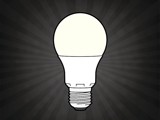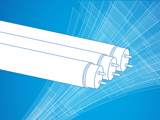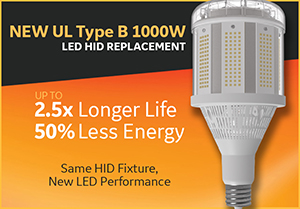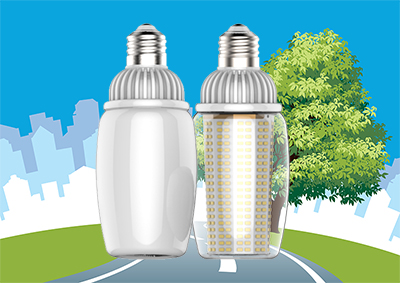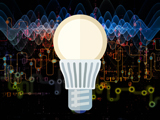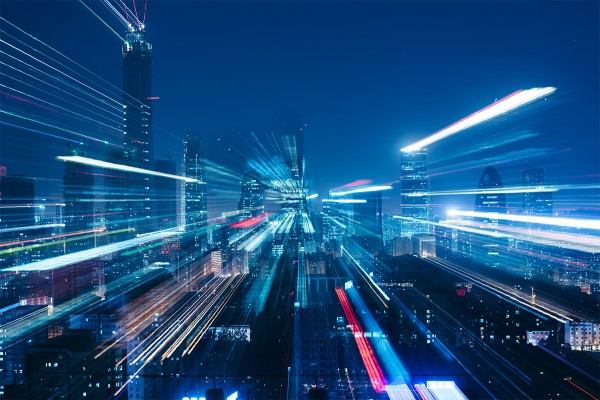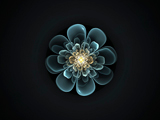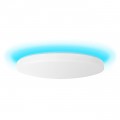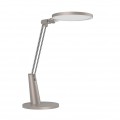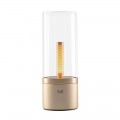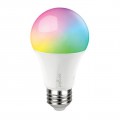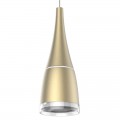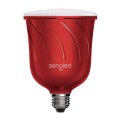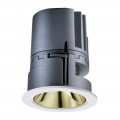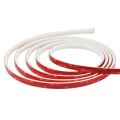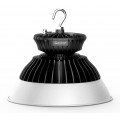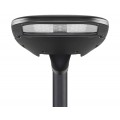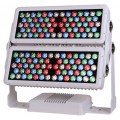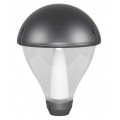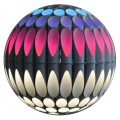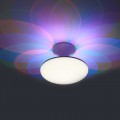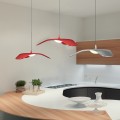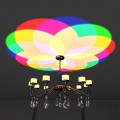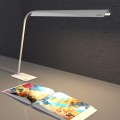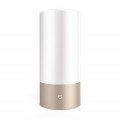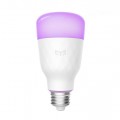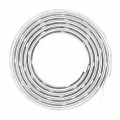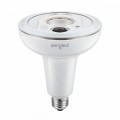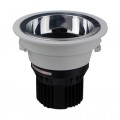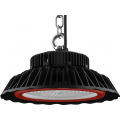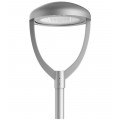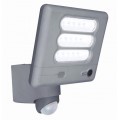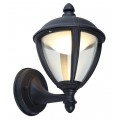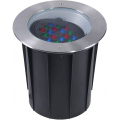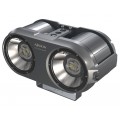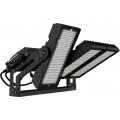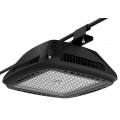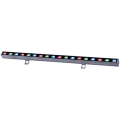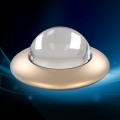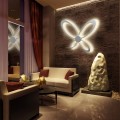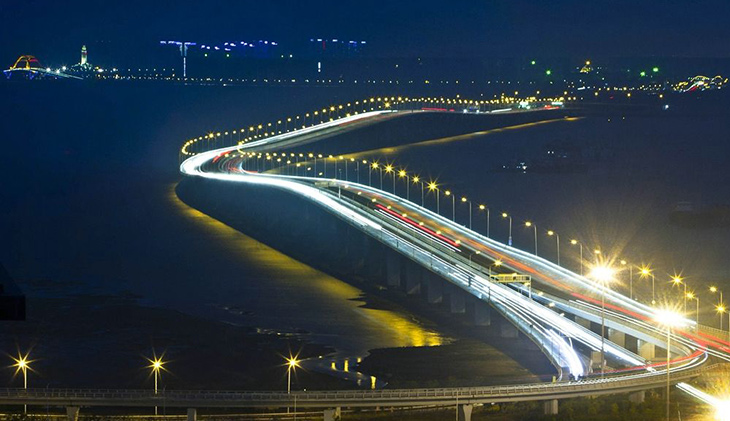
Upgrading for Efficiency and Productivity
Over the lifetime of a lighting system, there're substantial costs associated with operating and maintaining that system. As luminaire age and deteriorate, the light-emitting ability degrades and luminous efficacy (light output per unit of electrical power, lm/W) is significantly dropped. In large commercial or industrial buildings (e.g. offices, shopping centers, facilities, plants, warehouses, etc.), electricity expenditure on lighting can be as high as more than half of the total energy budget. About 20-30% of the electrical power produced in industrialized countries is used for lighting. Lighting in commercial facilities consumes close to 70 percent of overall lighting electricity use in the United States. Consequently, as lighting technologies improve in performance and efficiency considerable economic benefits can be obtained utilizing more efficient lighting systems. Moreover, legal regulatory requirements and the drive for a more productive workplace environment have created an increased demand for high-efficiency functionality in commercial and industrial lighting fixtures. Thus, it may become necessary to retrofit or redeploy lighting systems with the most desirable technology assessed from the standpoint of the quality and quantity of light generated per unit cost.
Lighting Upgrade: Retrofit or Redesign?
There are two basic options for upgrading an existing lighting system to lower the operating costs and/or optimize the performance of that system based on efficiency requirement and the task performed: retrofit or redesign. Retrofit is a method to upgrade a light fixture with more advanced lighting technology without modifying its support structure - the new lighting source or assembly may be configured as a retrofit to engage mechanically and operationally with a conventional light fixture. Lighting redesign is a method to completely renovate a lighting system with a substitute that comes with an entirely new lighting scheme, distribution pattern, photometric performance, control topology, and other features to reduce energy and maintenance costs, extend luminaire life, enhance the visual environment, and improve workplace productivity.
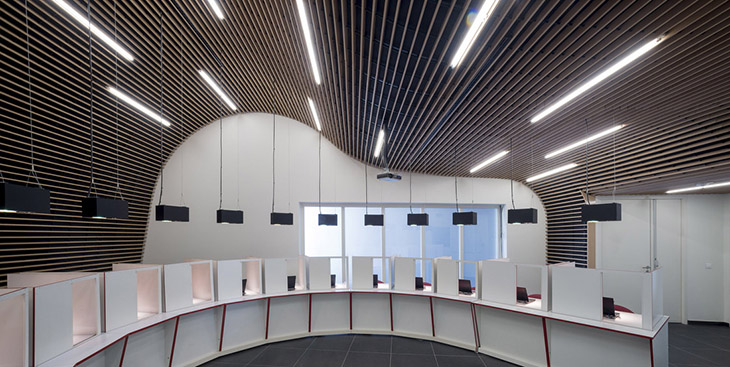
Sometimes, it may make sense to do a lighting redesign if illuminance levels, light distribution, uniformity ratios, light quality and energy efficiency no longer meet the requirement for tasks performed while a retrofit would not satisfy the need and the cost element has a negative impact on the payback time. Significant remodeling cost, however, can be incurred to repair the luminaire mounting structures such as ceiling area where the fixtures like recessed troffers were removed. The high cost associated with redeploying new fixtures oftentimes exceeds the cost benefits of a lighting redesign, to the point where it is not economically feasible to replace obsolete lighting fixtures with new lighting fixtures that come with different form factors for the purpose of incorporating modern components. A retrofit, due to financial considerations, is the common approach of upgrading. A good quality lighting retrofit can refurbish, easily and operatively, each conventional light fixtures with modern components to reverse the effects of deterioration. However, on projects where the refurbished lighting systems would fail to provide required illumination for the space or application, a redesign is the better choice. A comprehensive assessment is essential to determine if one (or both) of these methods is advantageous over the other.
Obsolete Lighting Technologies
Lighting in residences, offices, hospitality, institutional, commercial, industrial, outdoors, and a host of other environments was conventionally achieved using a wide variety of technologies: fluorescent, incandescent, and high intensity discharge (HID), etc. The economics of lighting has two components, the initial investment (purchase and installation costs) , and the operating cost (electricity and maintenance cost). Incandescent lighting had been the most popular general purpose lighting technology for many decades due to its low initial purchase price and the high quality (good color rendition with Ra greater than 95) of its light output. Incandescent bulbs, however, are very energy-inefficient light sources with approximately 90 percent of the electricity they consume being released in the form of heat or infrared energy rather than light. Incandescent lighting is burdened with a high cost of ownership as a consequence of very low efficiency and short product life span (750-1000 hours), in particular when the lighting is cycled on and off with a high frequency. Fluorescent lighting became more prevalent alternative to incandescent lighting solution for both residential and commercial facilities due to its relatively higher efficiency and longer lifespan than incandescent lights.
While incandescent and fluorescent lamps have a low initial purchase cost which means high purchase cost efficacy, their operating costs are high because of their low luminous efficacy. Fluorescent lamps are more energy efficient than incandescent lamps with luminous efficacy at approximately 85 lumens/Watt, but are still relatively inefficient. Compact fluorescent lamps are more effective at converting electricity into light but these bulbs are poorly suited for spotlighting which requires directed light. As with incandescent lamps, the life span of fluorescent lamps is significantly reduced when the lights are frequently cycled on and off. Fluorescent lamps have significant performance variations across a range of temperatures. Additionally, fluorescent lamps produce ultraviolet (UV) light.
High intensity discharge (HID) lamps such as high pleasure sodium (HPS), low pressure sodium (LPS), metal halide (MH), and mercury vapor (HgV) offer high luminous efficacy, good beam control and energy efficiency. They typically suffer from extremely slow start-up times, long hot restrike process, envelope failure (bulb explosion), poor lumen maintenance (brightness fall-off), and poor color reproduction.
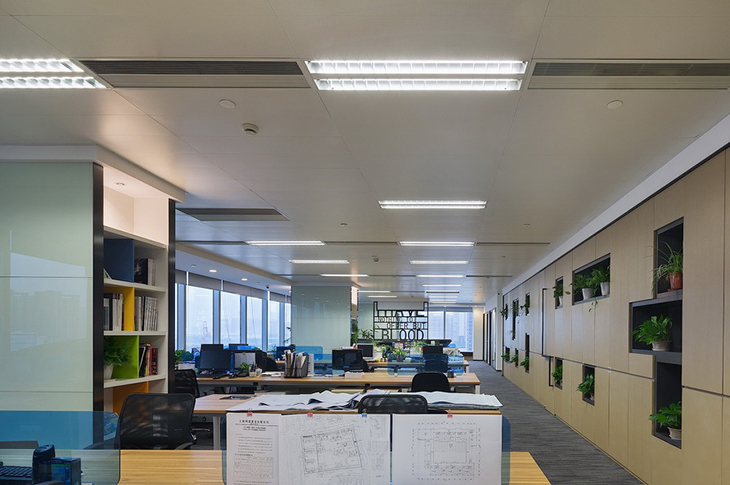
LED Lighting Retrofit: Innovation and Sustainability
The most recent evolution in digital lighting technologies has been revolutionizing the lighting industry. Solid state emitters represented by light emitting diode (LED) lamps present a viable alternative to the foregoing technologies. A light-emitting diode is a semiconductor optoelectronic device that produces light at a specified wavelength or a range of wavelengths when an electric current is passed therethrough. Functional advantages and benefits of LED lighting include high photon flux efficacy, low energy consumption, excellent controllability, improved resistance to vibration, faster switching, lower operating voltage, narrow-band light emission, high quality spectral output with good color rendering ability, and flexibility in terms of assembly compared to conventional light sources. These characteristics can be quantified by its useful lifetime in excess of 50,000 hours, and perhaps as long as 100,000 hours or more (e.g., L70 lifetime expressed as the hours of service at which a lumen maintenance of 70% of the original light output is maintained). LED technology overcomes the economic, environmental and health concerns associated with the conventional incandescent, linear fluorescent, CFL (compact fluorescent lamp) and HID lighting. Recent improvement in the production capacity of LED packages and the mass availability of LED luminaire components dramatically cuts down the payback time of LED lamps. The affordability, extended operation life, plus the environmental and health benefits (no mercury or other hazardous materials involved in the manufacturing process, no UV radiation during operation) make LED lighting an extremely desirable solution for retrofitting obsolete lighting technologies.
What Constitutes a Good LED Retrofit
An LED lighting retrofit typically has similar physical aspect, beam pattern, light intensity, size and supply adaptor connections as each specific conventional light assembly of replacement. The performance and lifespan of LED retrofit lamps depend on the physical configuration, optical features, electrical characteristics, reliability and operational life of each of its components, as well as on the design scheme that optimizes the capability of these components to match each other, for maximizing the quality versus cost feature of each retrofit. A good LED retrofit kit allow for increased light output and improved light quality while simultaneously reducing energy consumption as well as the associated installation and remodeling costs. Thus, LED retrofitting creates a balance between economics and performance, providing a more affordable way to take advantage of new lighting technology.
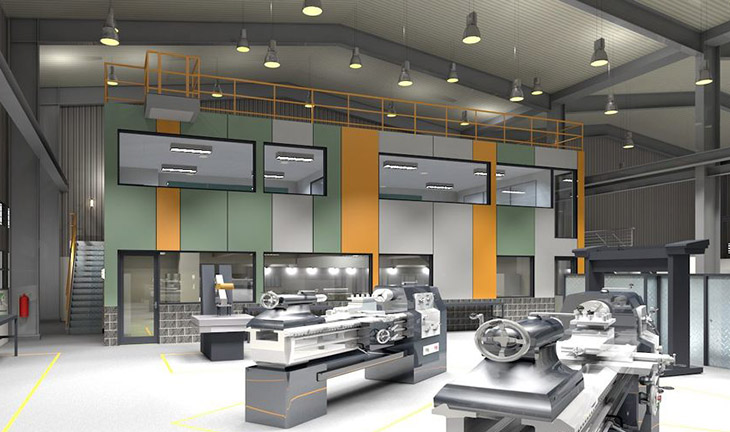
Common Retrofit LED Lighting Fixtures
LED Tube Lights - The LED tubes are probably the most ubiquitous lighting retrofit to serve as a replacement light source for T5/T8/T12 fluorescent tubes. A retrofitted LED tube typically features the same footprint or form factor (e.g. T8 LED tube having a 26 mm diameter and being e.g. 60 or 120 cm in length) to be able to replace the florescent tube. The cylindrical housing uses material such as an aluminum alloy joined with a plastic cover, or comes with an all-plastic or glass tube construction. The circuit board along with a plurality of SMD LEDs is disposed within the cylindrical housing. The adaptors with 2-pin G13 connection cap the respective ends of the cylindrical housing and are electrically connected to the power supply (also known as driver) within the tube. The ballast-compatible LED tube lamps are plug-and-play lights designed to directly replaces fluorescent tubes require no rewiring of conventional fixtures. The ballast-bypass or line voltage type LED tubes does not require a ballasts to operate, but the existing ballast in a fixture must be removed or bypassed and the sockets need to be changed from shunted sockets to non-shunted sockets before installing the ballast-bypass LED tubes.
LED Troffers - Troffers are the predominant office, hospital and institutional lighting systems which are installed in a ceiling system (which may be a dropped ceiling, ceiling grid and tile system, or other engineered ceiling system) and distribute light downwards for ambient illumination. Retrofitting legacy recessed lighting systems with digital lighting technology introduces design challenges due to the characteristic differences in light distribution pattern between the fluorescent and LED light source. By the very nature of their design and operation, fluorescent tubes produce omni-directionally a soft and widely distributed light while LEDs have a highly directional external intensity distribution. Consequently, LED troffers typically make use of secondary optics to create soft and diffuse lighting effects that can greatly reduce faceted shadows, minimize glares and improve the optical efficiency of LED arrays. There're three typical types of LED troffers available on the market: prismatic, parabolic, and volumetric.
LED Panel lights - Edge-lit LED panel lights are an innovative lighting product that rapidly became the top choice for new construction applications or retrofitting existing fluorescent troffers in commercial and institutional settings. These ceiling lights feature a clean, modern look and an exceptionally low profile design which seamlessly fits into most drop ceilings, making them an ideal solution for recessed, surface or suspended installations for offices, commercial buildings, industrial facilities, conference rooms, schools, hospitality and other indoor lighting applications. The advanced optical assembly includes LEDs positioned adjacent the edges of a (LGP) which refracts the beams down towards a high-transmittance diffuser, which provides a more tailored and customized light output and eliminates the hot spot problem. The revolutionary edge-lit LED architecture offsets the negative aspect of LED lighting and effectively disperse the concentrated light ray of the LEDs so as to create a more uniform, glare-free, and visually comfortable lighting environment while delivering unparalleled aesthetics, performance, and return on investment.
LED High Bay Lights - Many industrial and commercial facilities have the burden of illuminating high-ceiling areas with conventional HID high bay lamps such as metal halide and high pressure sodium lamps that consume a large amount of electricity, pose frequent catastrophic failures, comprise materials which can adversely affect the environment, and are unsuitable for frequent switching applications. Additionally, service life, luminous efficacy and light output of conventional high bays severely degrade over time. LED high bay lights provide sound retrofit options with substantially lower energy consumption, considerably longer lifespan, unprecedented photometric performance, extraordinary durability and maintenance-free operation. High bay luminaires that use screw type florescent or HID bulbs can be field replaced with high power LED bulbs such as LED corn bulbs.
LED Street Lights - LED street lighting retrofits are designed to directly replace HPS road lighting fixtures without the need to change the electrical wiring, pole height, luminaire spacing or arrangement, while meeting all required application standards in terms of illuminance, luminance, uniformity, glare control etc. LED street lighting provides superior optical performance and scalability while minimizing operating and maintenance costs.












